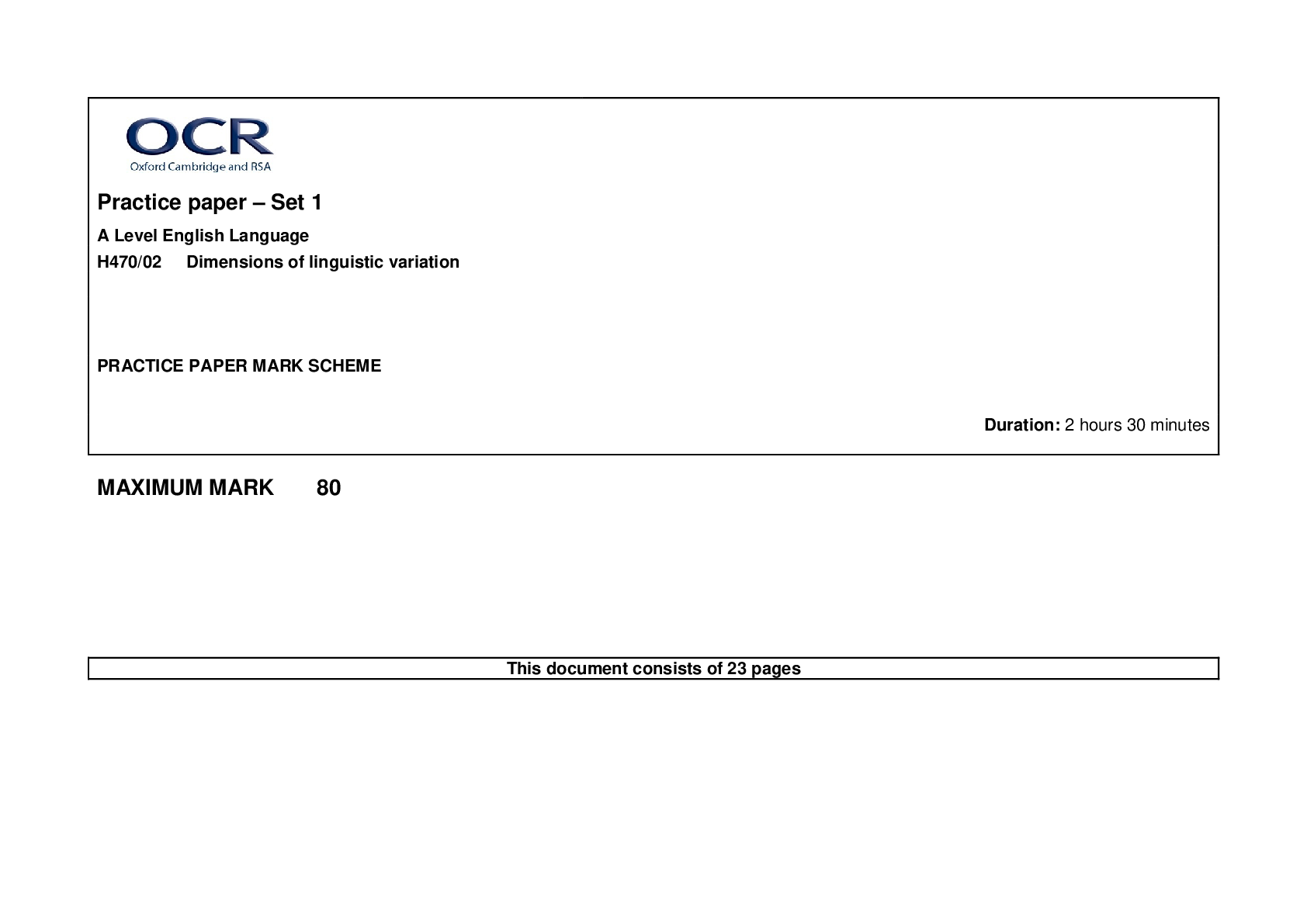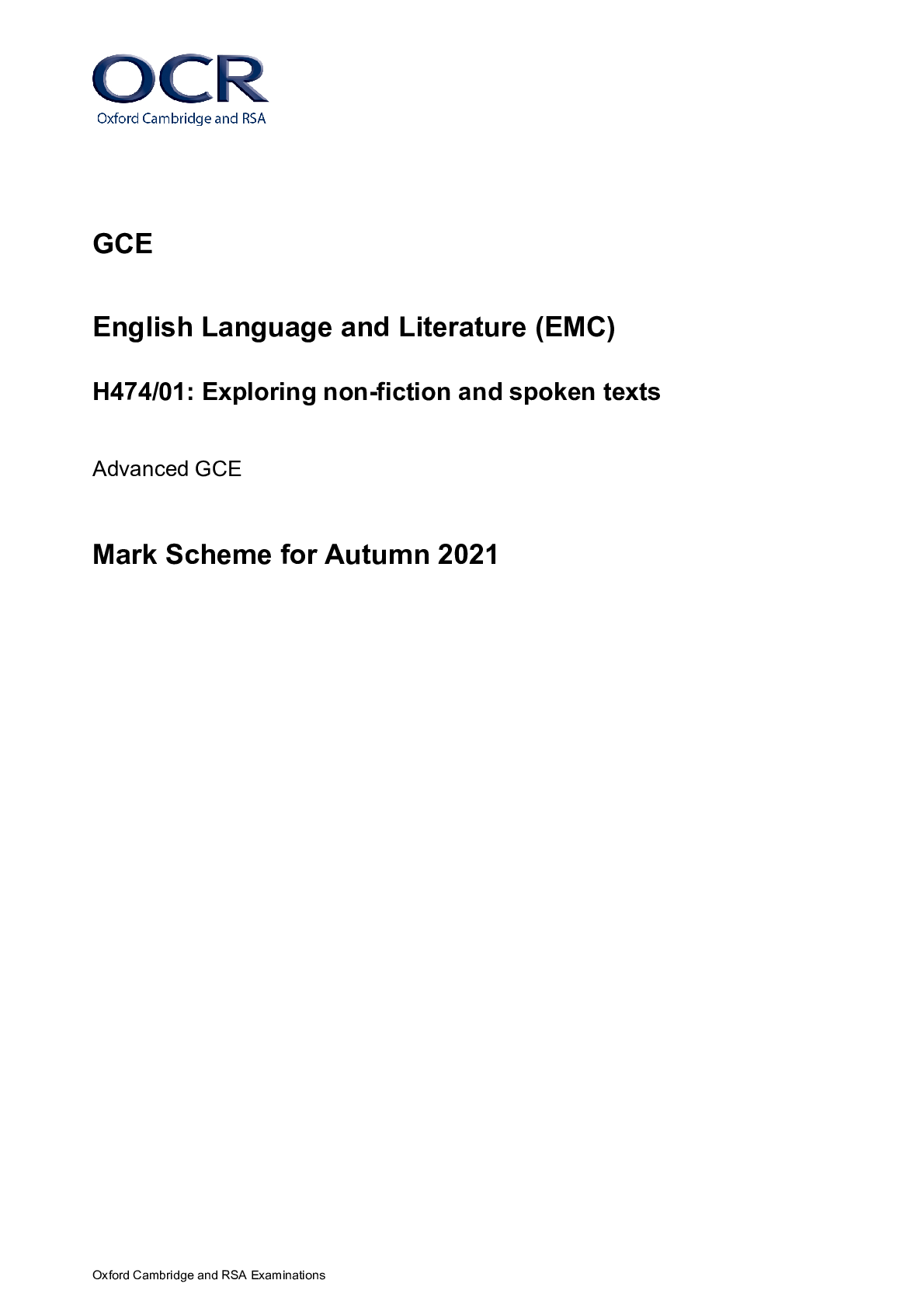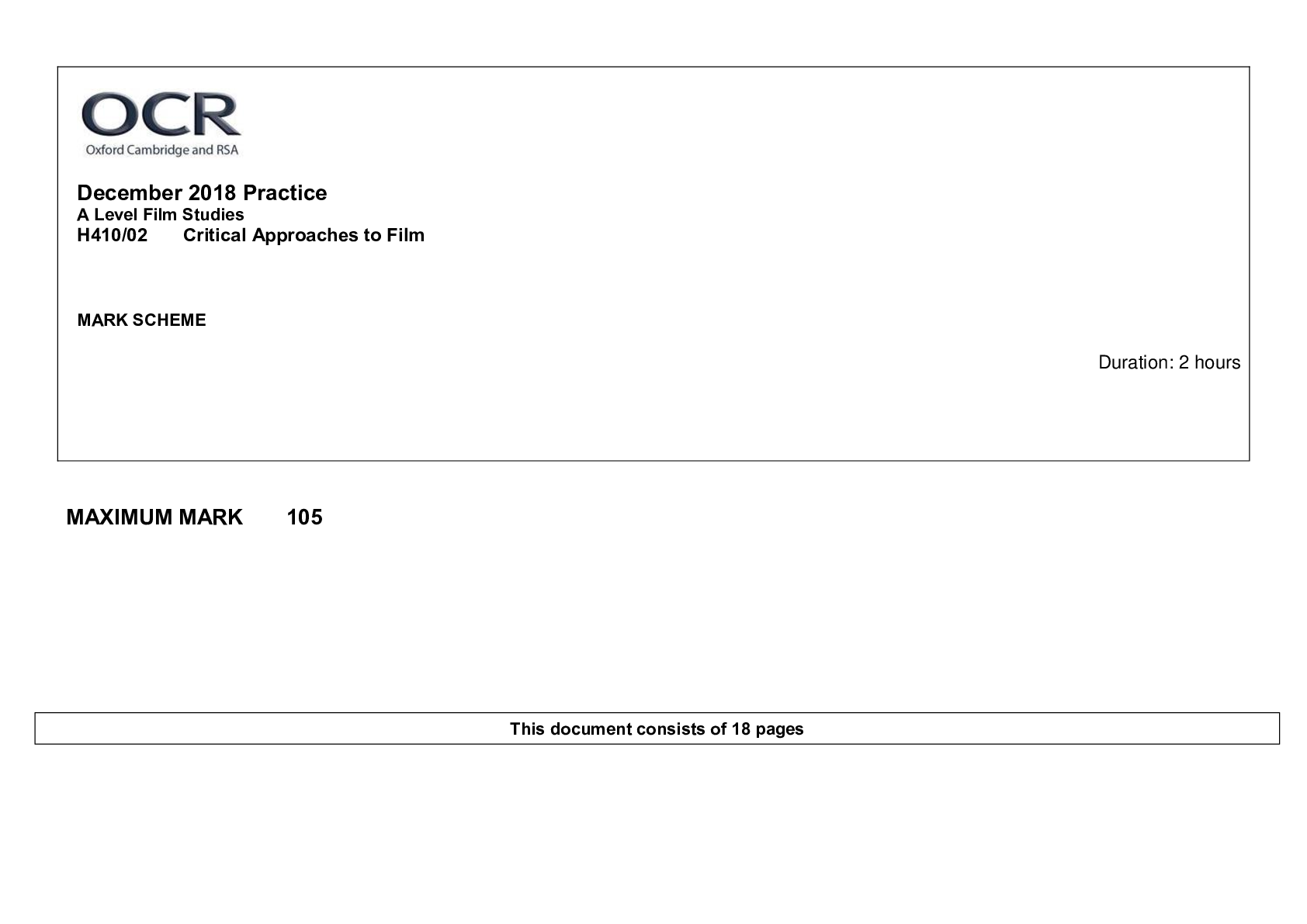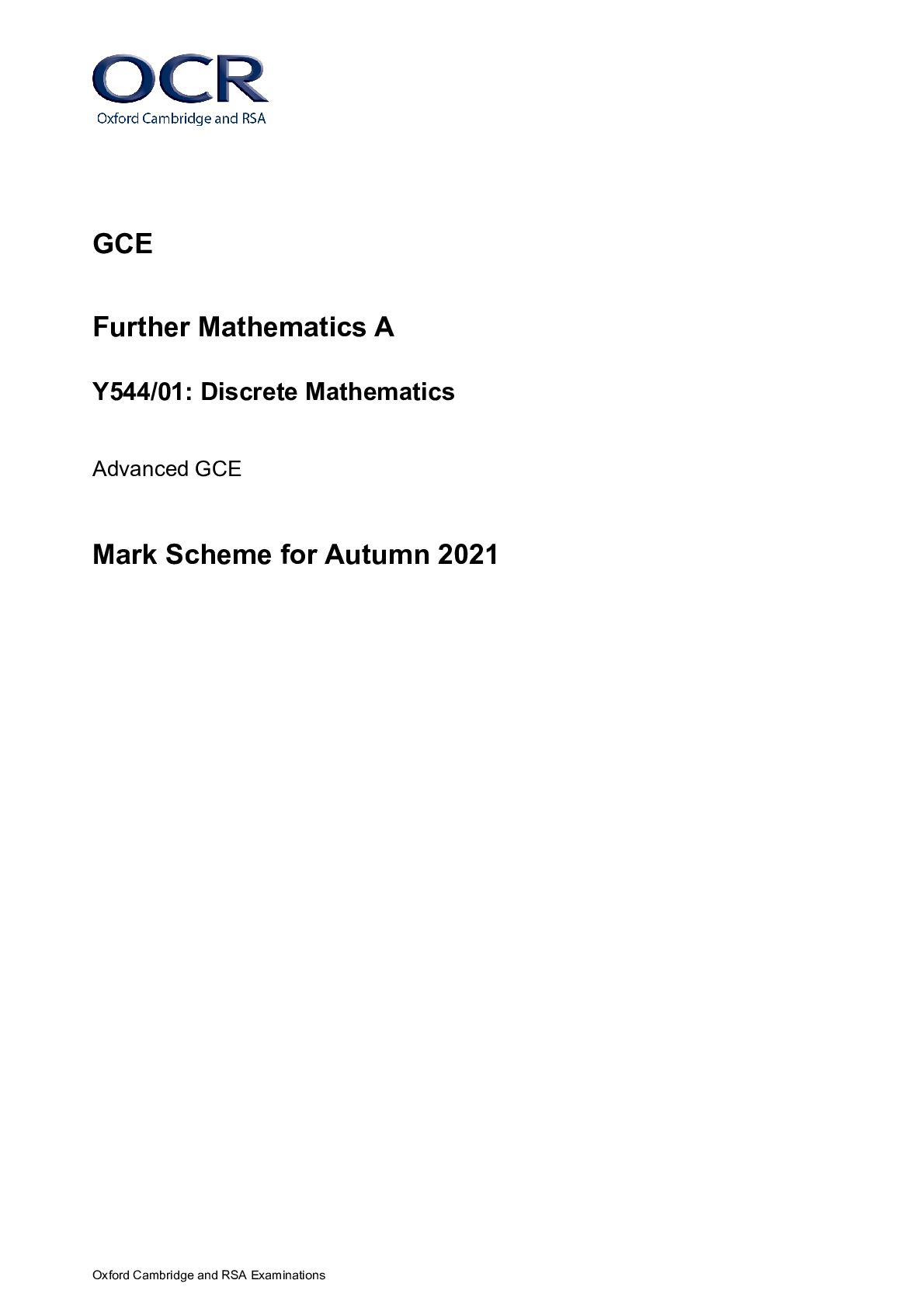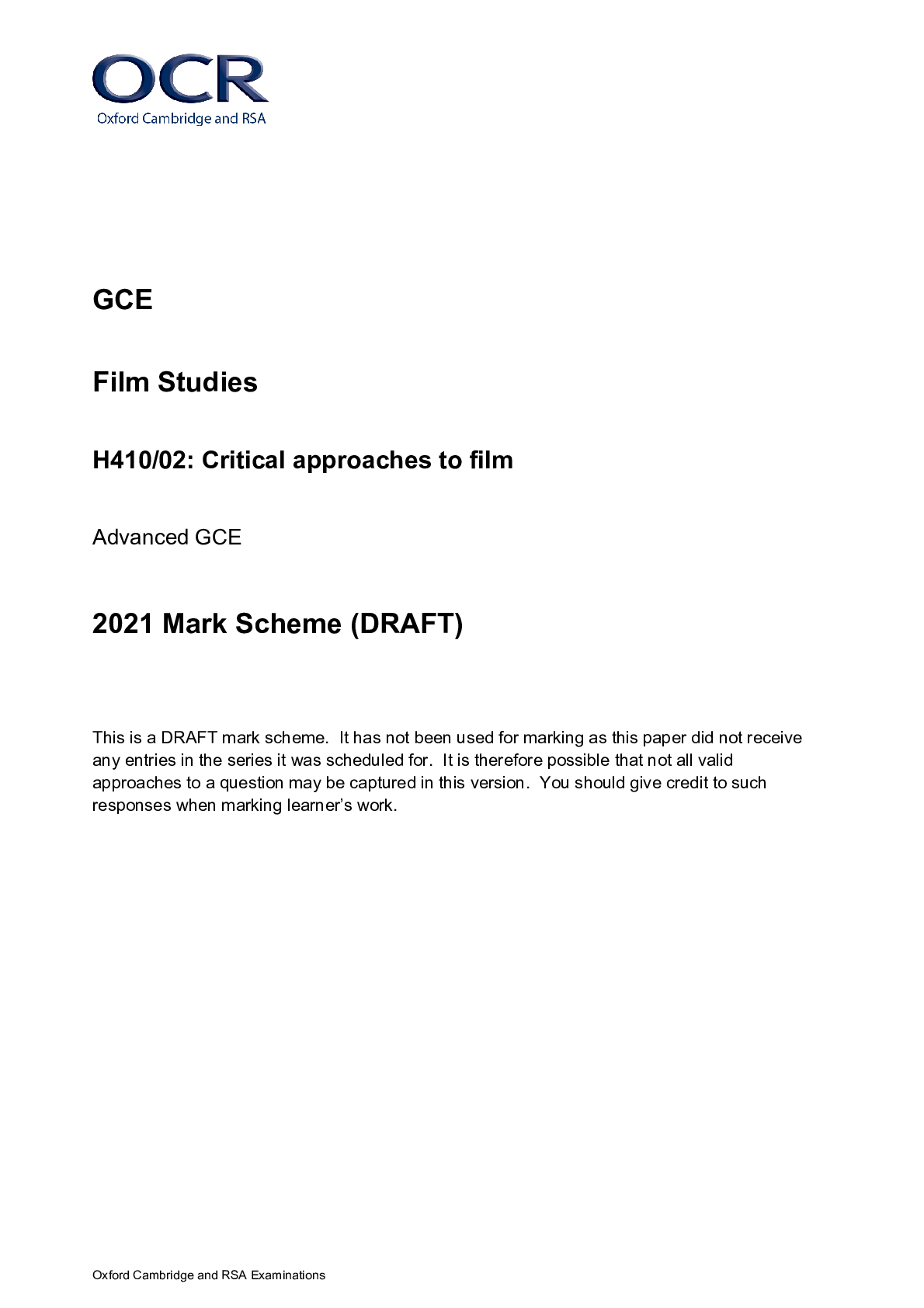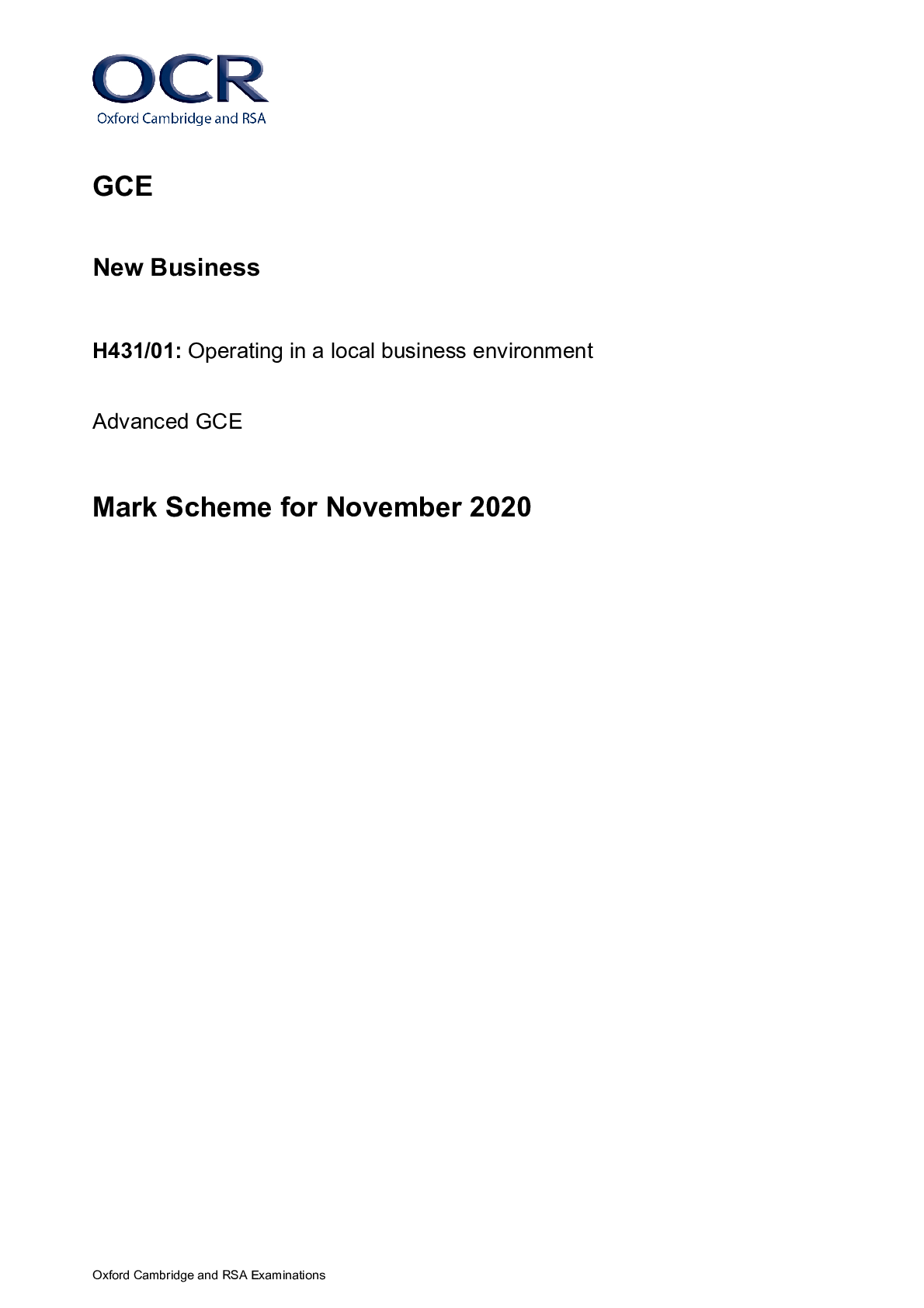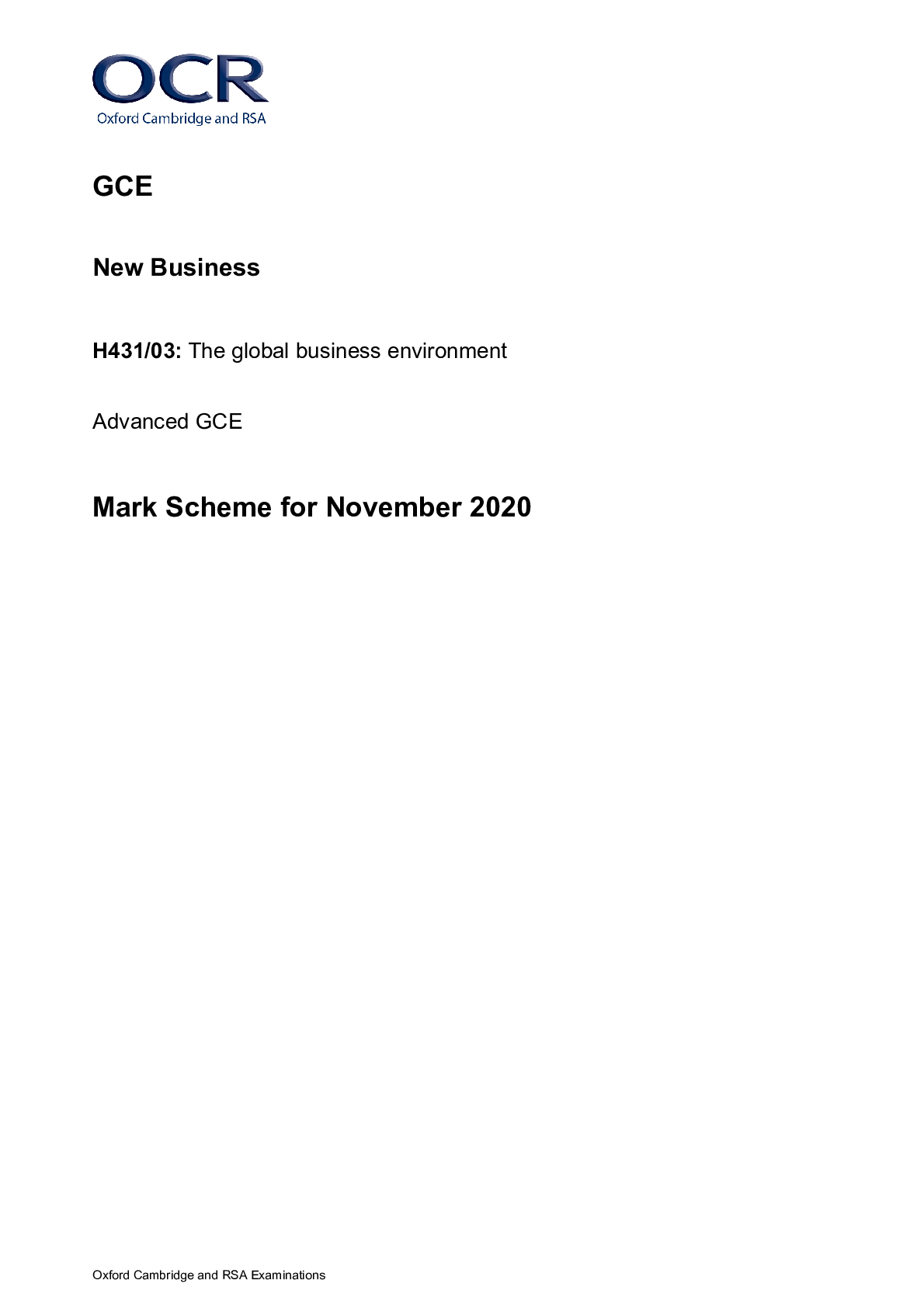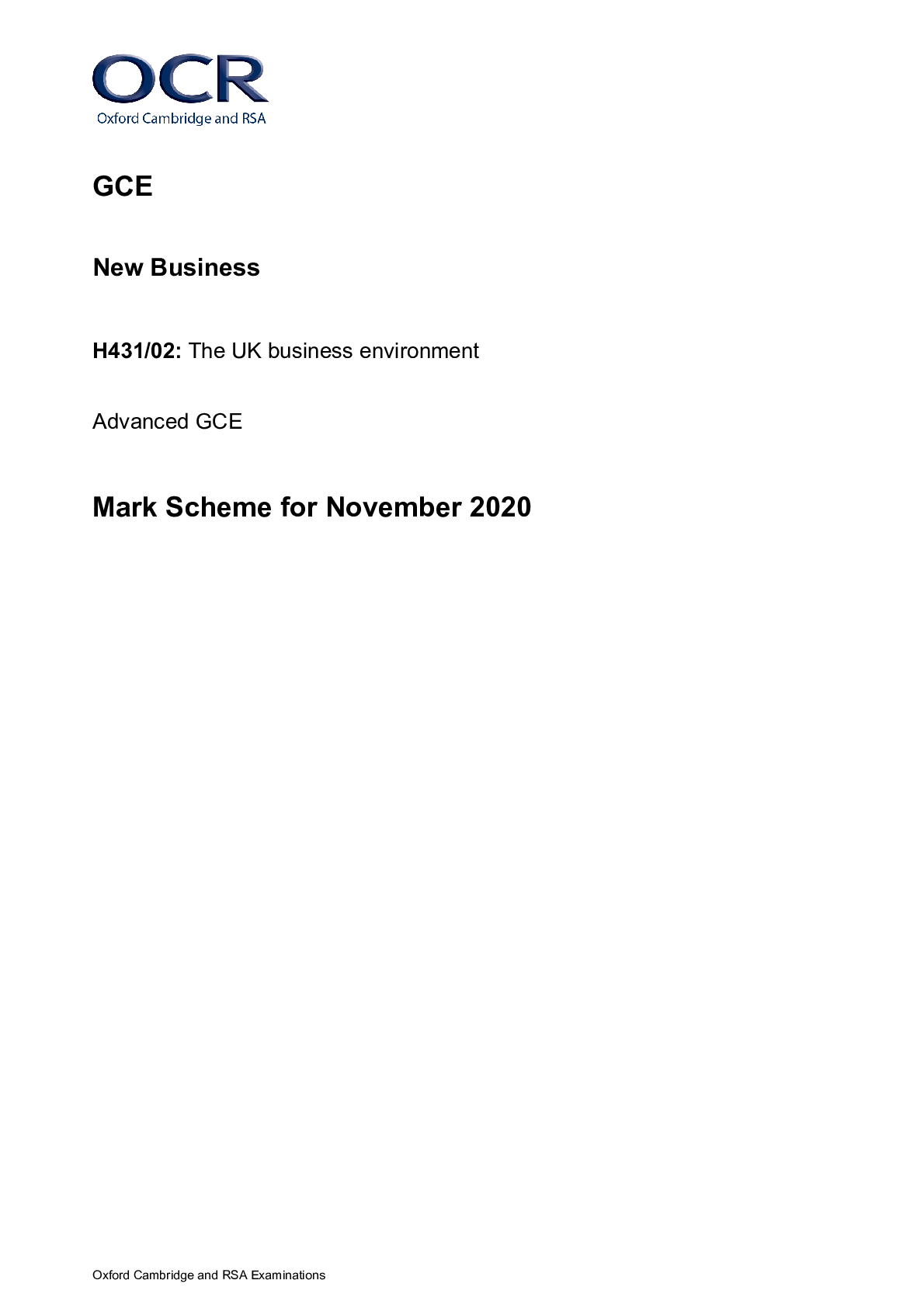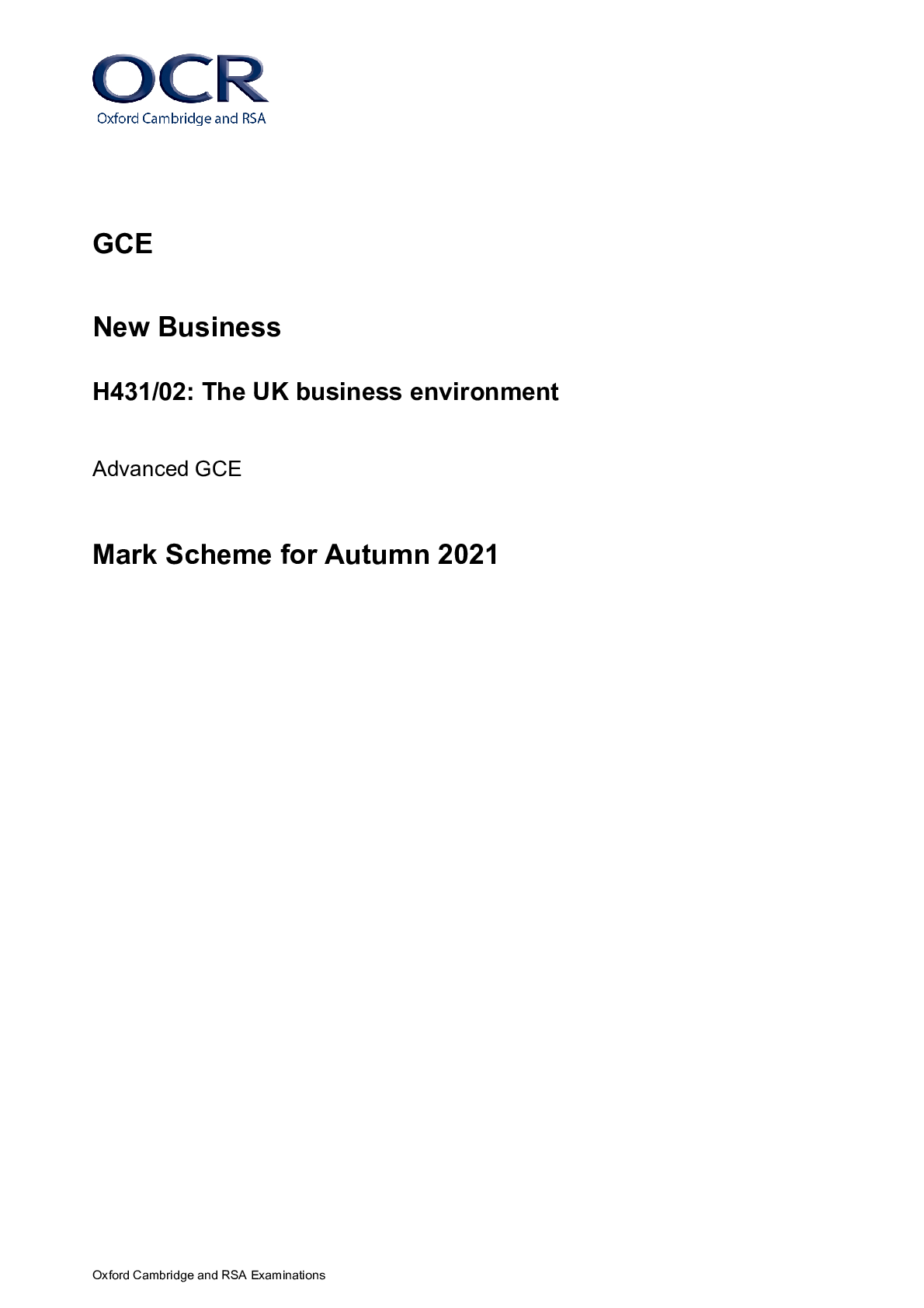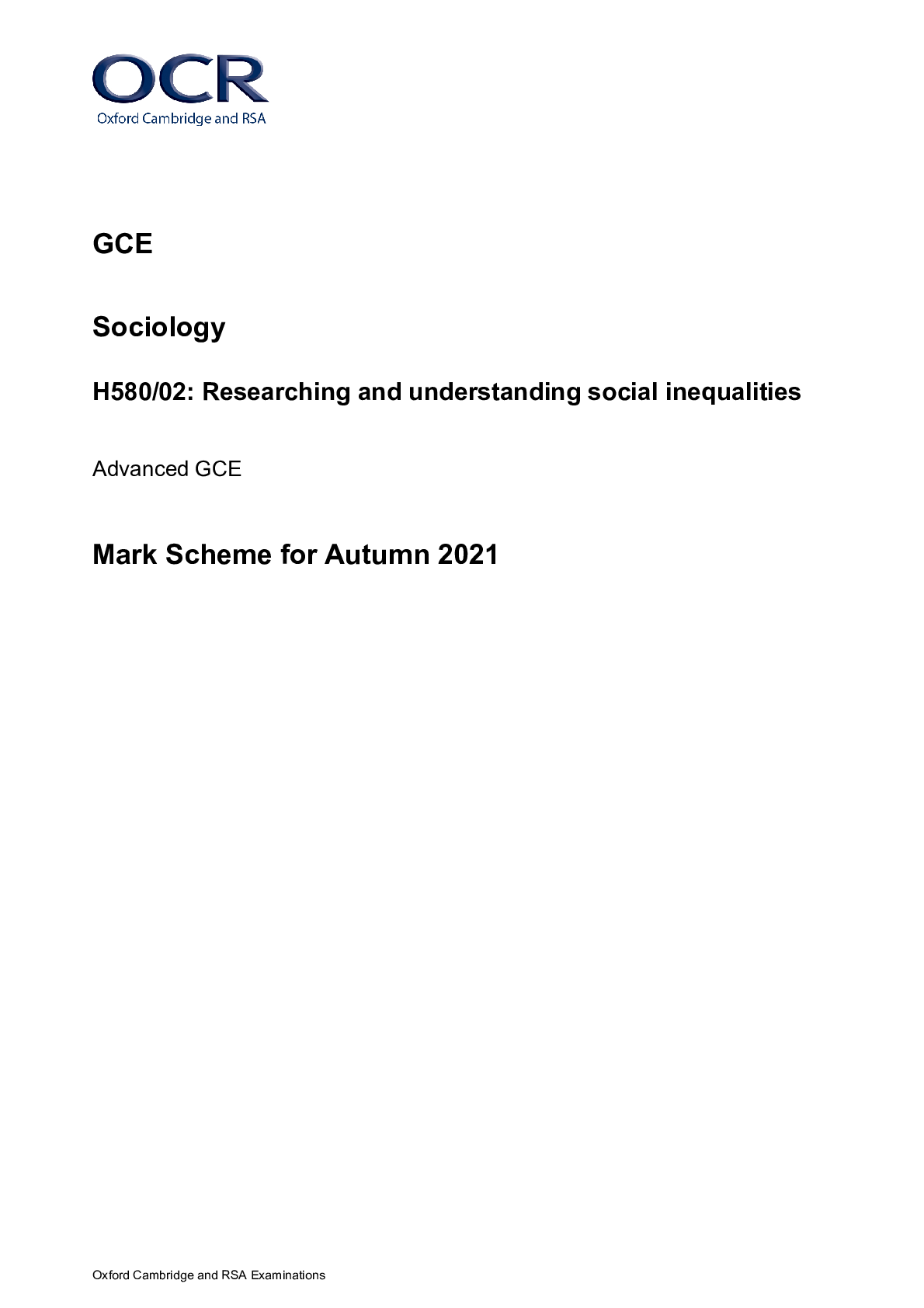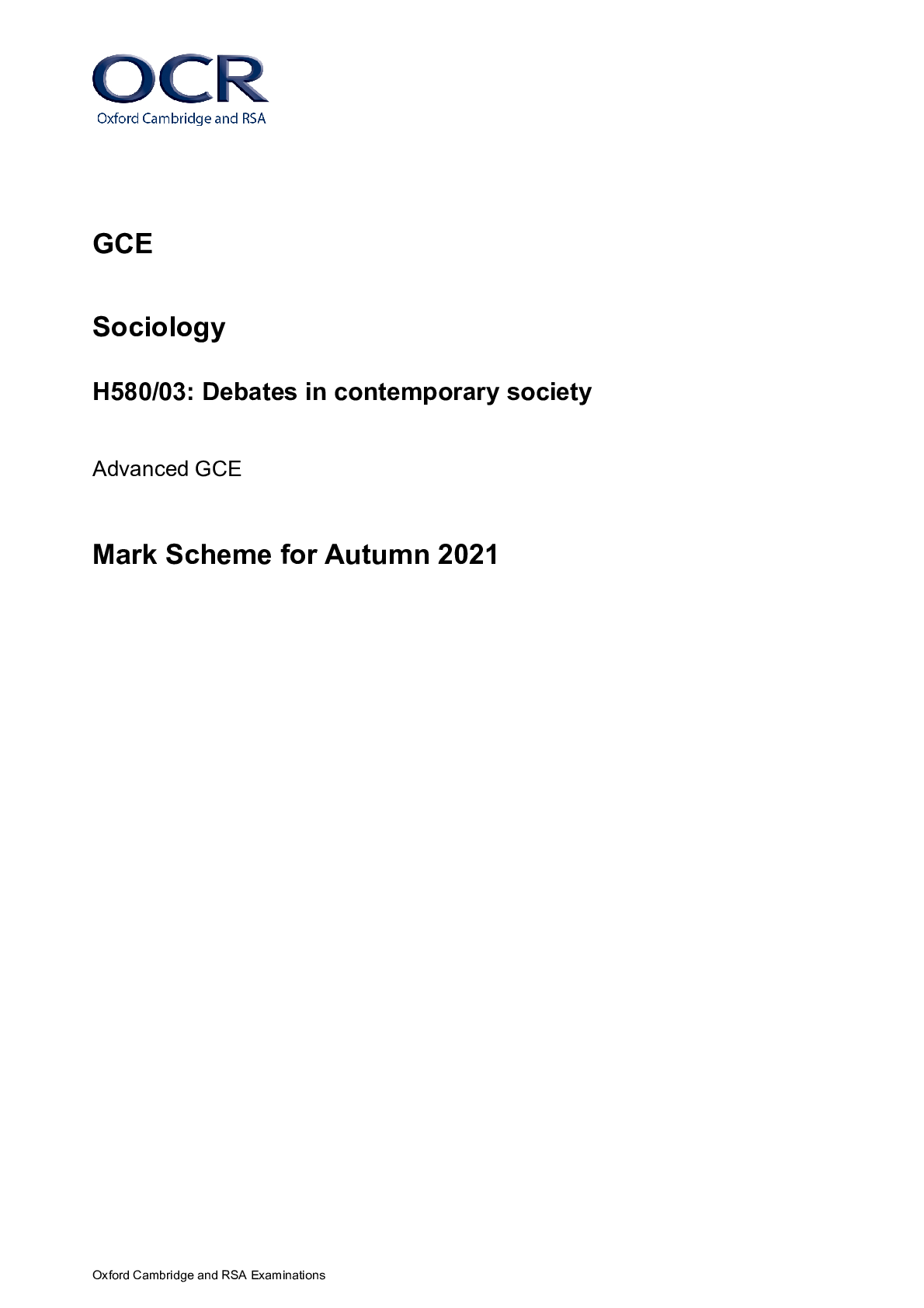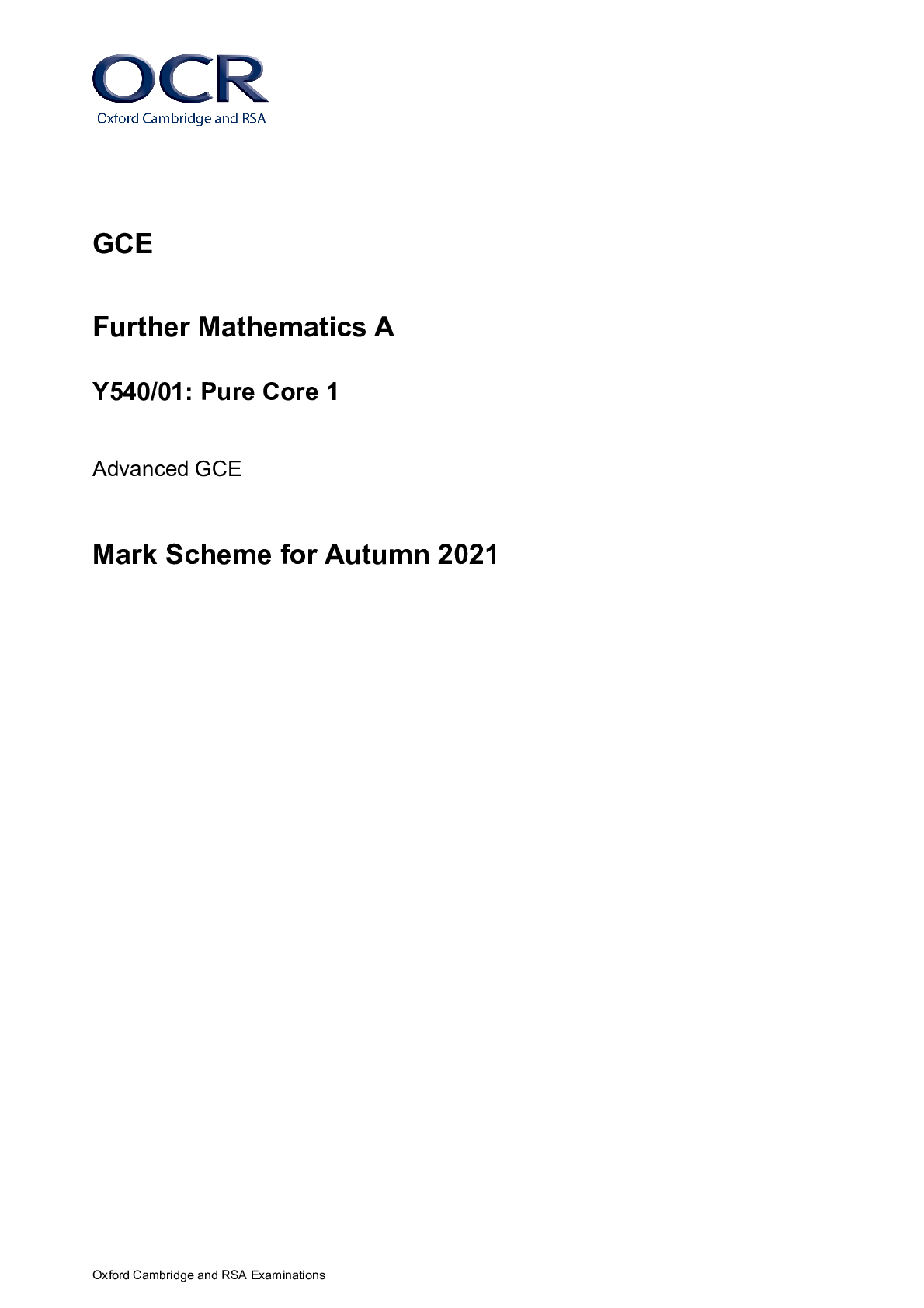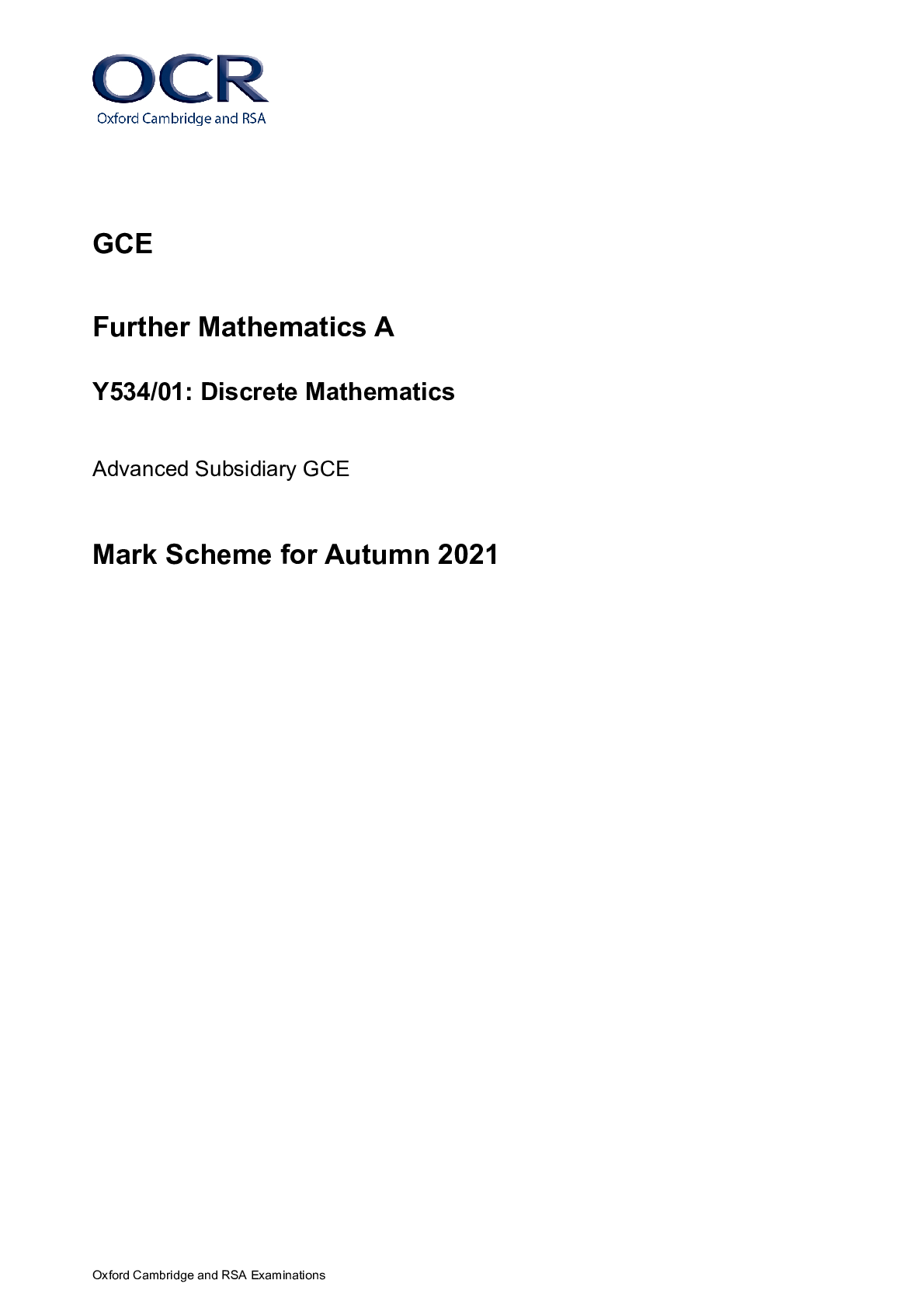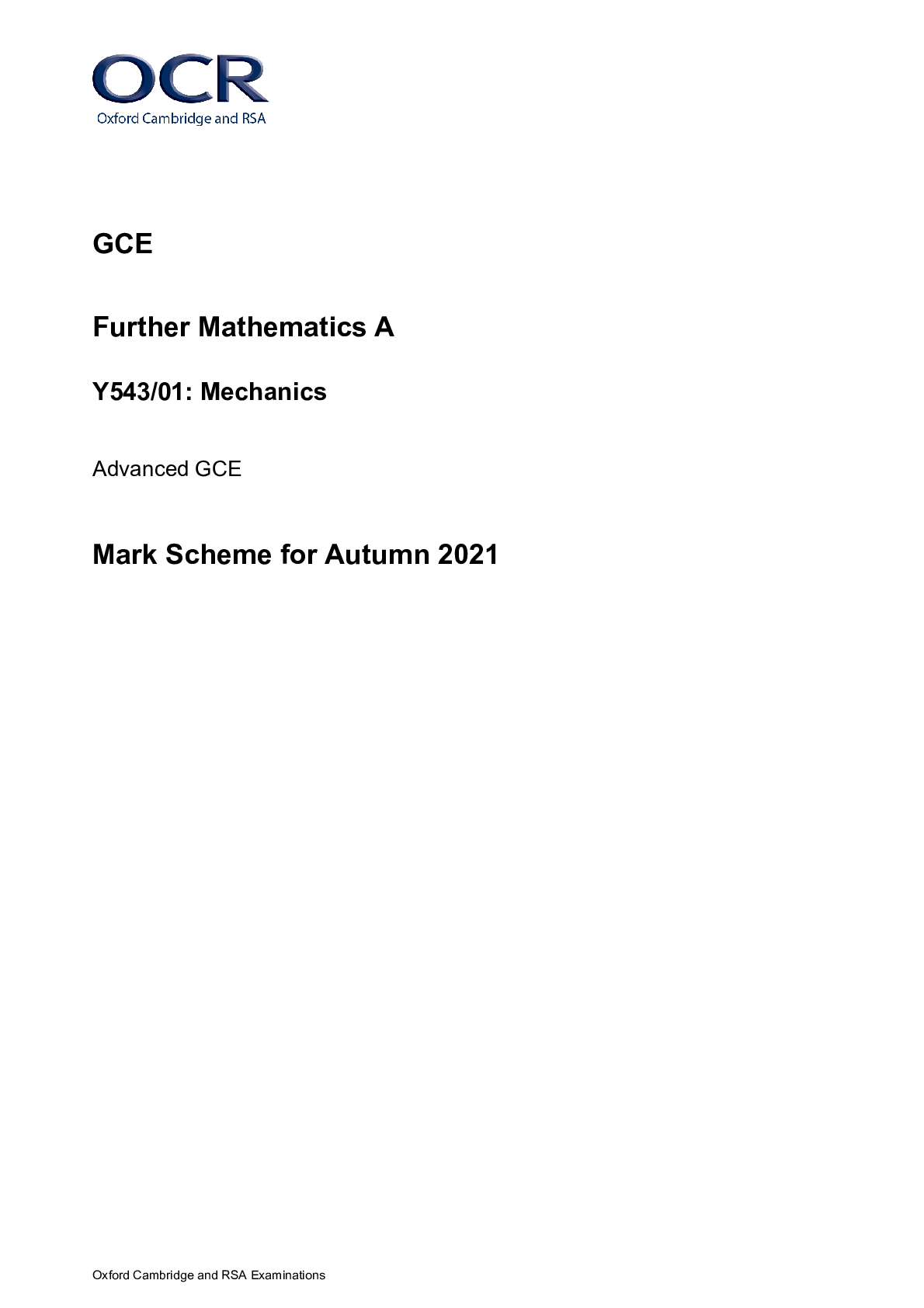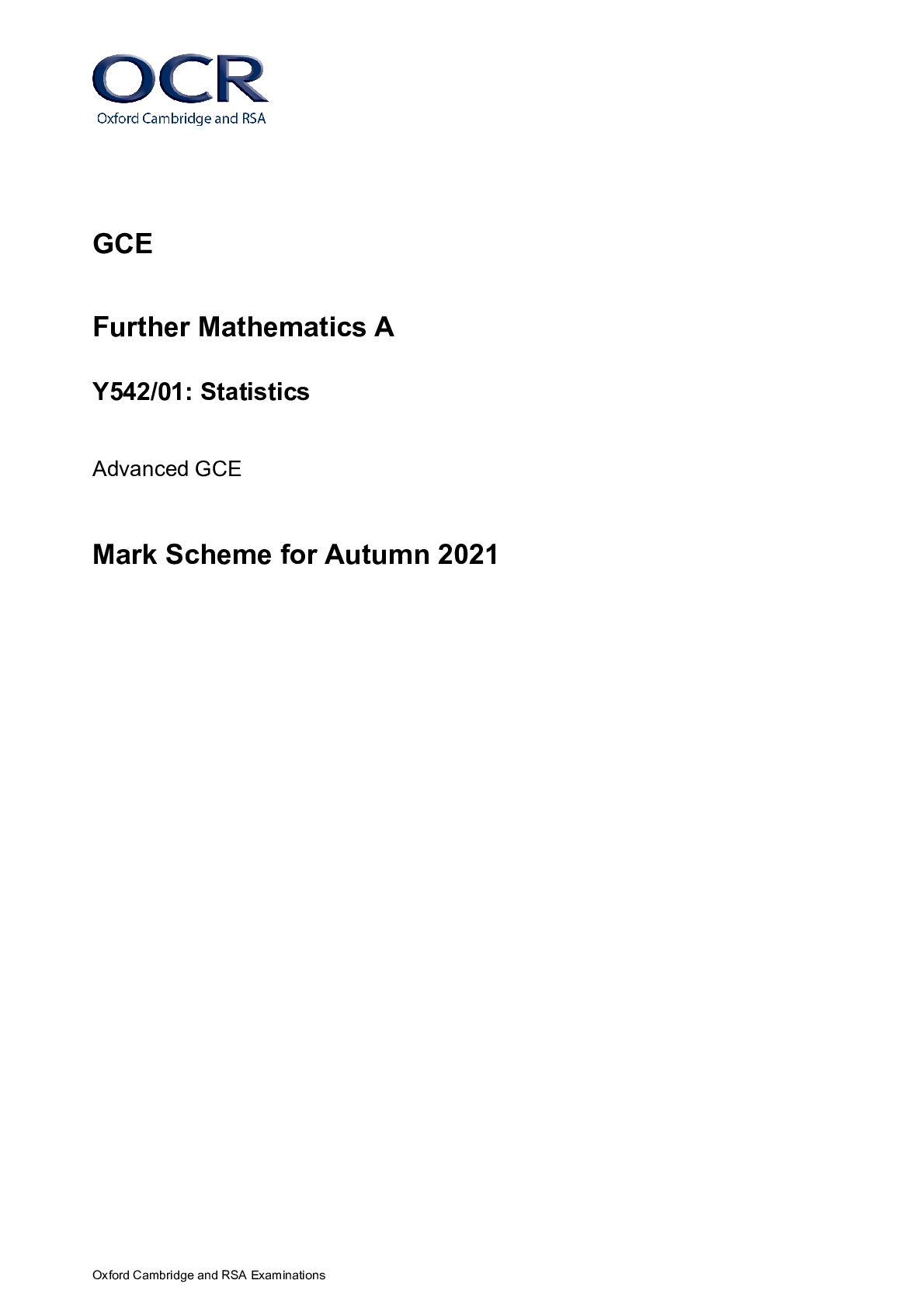English > MARK SCHEME > OCR GCE English Language and Literature H474/02: The language of poetry and plays Advanced GCE Mark (All)
OCR GCE English Language and Literature H474/02: The language of poetry and plays Advanced GCE Mark Scheme for Autumn 2021
Document Content and Description Below
Explore how William Blake presents attitudes to children at play in ‘Nurse’s Song (I) and make connections with one or two other poems from your collection. You should consider Blake’s use o... f poetic and stylistic techniques and significant literary or other relevant contexts. A higher level response (levels 4 to 6) will: AO2 Use poetic and stylistic analysis effectively to support a coherent interpretation, identifying significant features. AO1 Use vocabulary and terminology effectively, referring to a wide range of literary and linguistic concepts. Express ideas fluently and coherently, with a wide vocabulary. AO3 Make telling use of relevant literary or other contexts, to further the analysis and to develop an interpretation. AO4 Make interesting and illuminating use of points of connection between the poems discussed, selecting significant stylistic and poetic features as part of a coherent analysis. A lower level response (levels 1 to 3) will: AO2 Identity some examples of poetic and stylistic techniques e.g. imagery, and make straightforward comments about freedom and control. 32 The indicative content shows an integrated approach to AO2 and AO1 with additional guidance for AO3 and AO4. Poetic and stylistic techniques (AO2 and AO1) Voice: 1st person, continuous present tense. Dialogue moves between the nurse (stanza 1, lines 1-2 of stanza 2 and stanza 4) and the children’s response (stanza 2 lines 3-4, stanza 3), ending with a near past tense statement in the final two lines. Form, structure: 4 quatrains divided between the nurse and the children as outline above. Line lengths vary between 5-11 syllables. In each quatrain lines 1 and 3 are 10/11 syllables; in stanzas 1-3 lines 2 and 4 are 8/9. In quatrain 4, lines 2 and 4 are shorter with six syllables, suggesting that the period of childhood innocence is limited. Enjambment throughout except for line 2. Mirrored request/response through quatrains 1-3. Imagery and symbolism: Contrast between the tranquillity of the nurse and the energy of the children. She is tenderly protective, but rather indulgent, and attempts to impose adult concerns about bedtime and the unhealthy night (‘dews’) are easily countered by the children. Suggestion that curtailing play is negative adult intervention. The transition from child to adulthood and the loss of innocence or ‘light’ is suggested by ‘time passing’. The evening setting suggests that the ‘little ones’ may be on the cusp of adulthood. The affinity of children with the natural world is emphasised by references to the landscape, ‘sheep’ and ‘birds’. Sheep can be linked to Christian ideas about the ‘Lamb’ symbolising [childhood] innocence. The elevated ‘hill’ viewpoint corresponds with the high spirits of the children.H474/02 Mark Scheme Autumn 2021 1 AO2 Identify some examples of poetic and stylistic techniques, e.g. imagery, and make straightforward comments about the presentation of city life. AO1 Use some terminology appropriately. Expression is clear and writing generally well organised, but may lack development. AO3 Make some relevant but limited use of literary or other contexts to support the response. AO4 Make a few relevant points of connection between the poems discussed; mostly generalised comparisons, e.g. listing points of similarity or difference. Rhyme and rhythm: A mix of dactyls and iambs create a singsong/’nursery rhyme’ rhythm, with perfect rhymes lines 2/4 emphasising this. Stresses fall on significant verbs, e.g. ‘play’. Internal rhyme in the 3rd line of each stanza, suggesting unity of mind between the nurse and the children. Lexis: Words associated with children, childhood, play, energy, emotion, animals, natural world, day and night, rest, repose, sleep. Grammar and morphology Open ended sentence, with very little punctuation: commas on lines 2, 7, 9, and 11. Organisation of quatrains used to control voice. Contracted verbs lines 12 and 15. Implied accent on final syllable of the poem for the rhyme scheme. Absent final full stop suggest an unending childhood in the landscape, despite the ominous hint of ‘light fades away’ in line 13. Cultural, literary or other relevant contexts (AO3) For example Of the poems: One of the ‘Songs of Innocence,’ this poem foregrounds the apparent affinity of children with the natural or pastoral world, symbolising their inherently ‘innocent’ state. The nurse is protective, but also hints at the existence of the adult world which the children must one day join. Of the wider literary/cultural: The pastoral setting is idyllic, contrasting sharply with the polluted cities associated with the industrial revolution. Connections (AO4) For example Connections are possible with a number of the poems in the collection. ‘The Echoing Green (I)’, ‘Nurse’s Song (E)’ and ‘Holy Thursday (E)’ may offer particular similarities and contrasts about how ideas about creative processes are presented [Show More]
Last updated: 1 year ago
Preview 1 out of 46 pages

Reviews( 0 )
Document information
Connected school, study & course
About the document
Uploaded On
Jul 10, 2022
Number of pages
46
Written in
Additional information
This document has been written for:
Uploaded
Jul 10, 2022
Downloads
0
Views
53

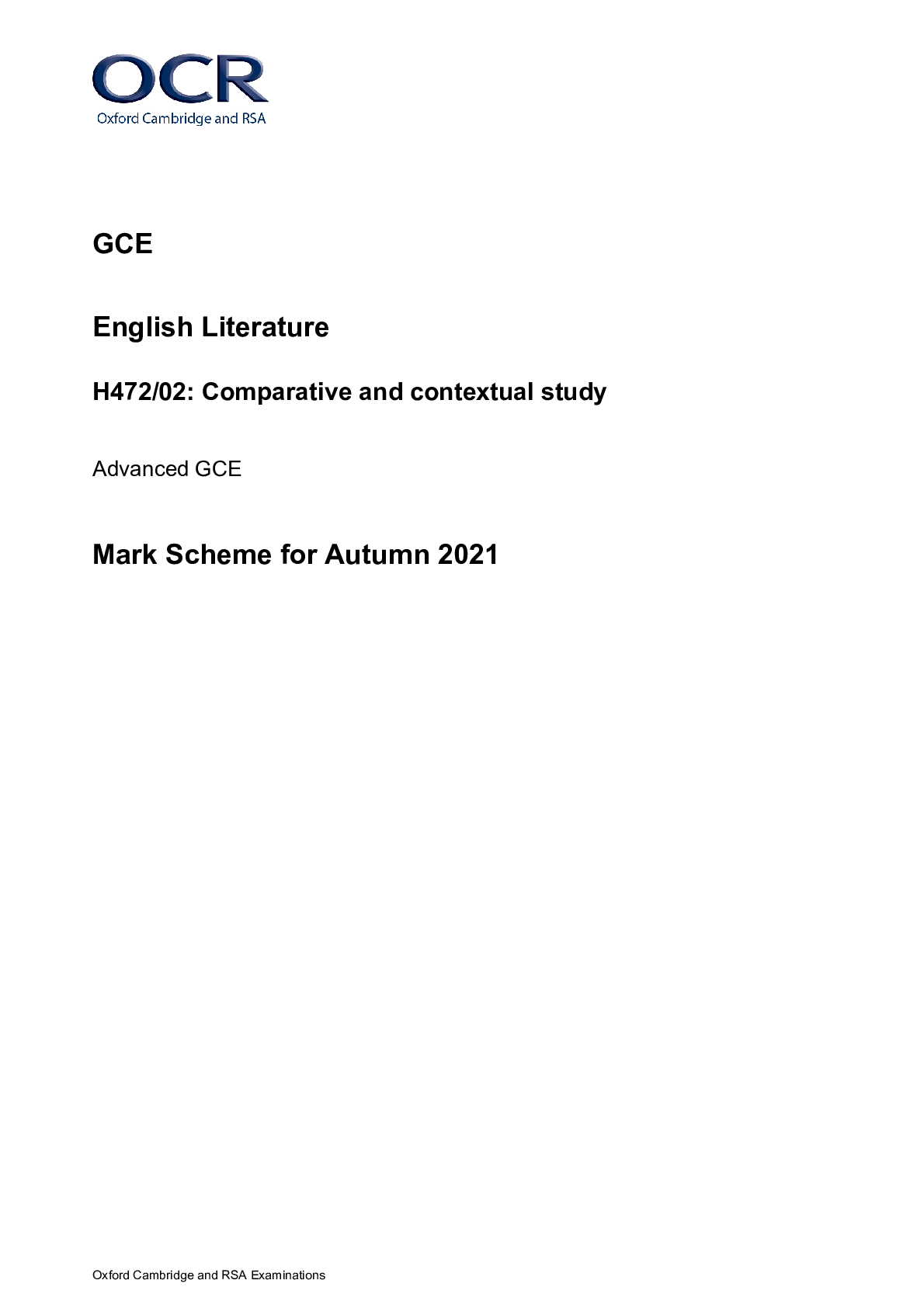
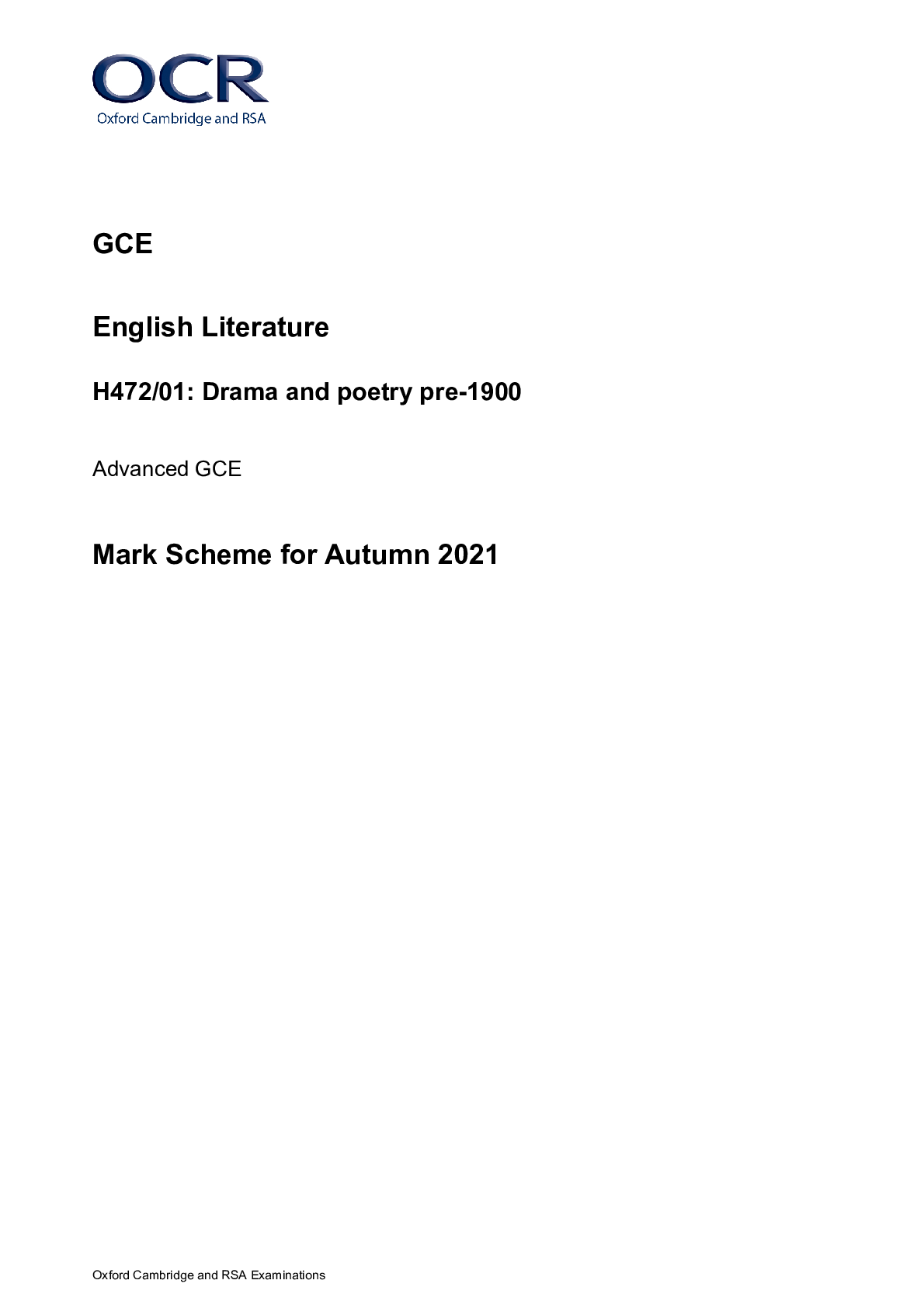
.png)
